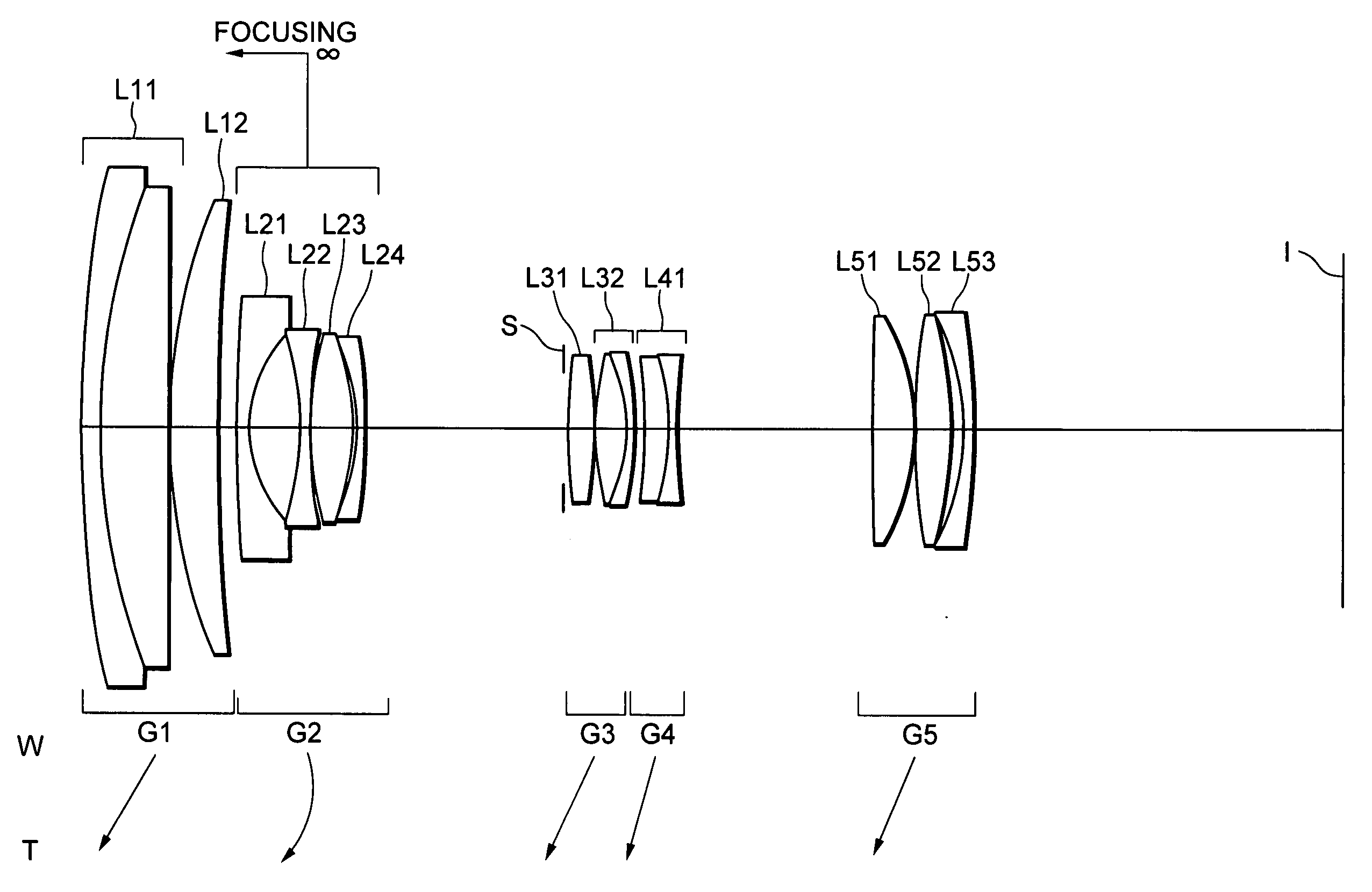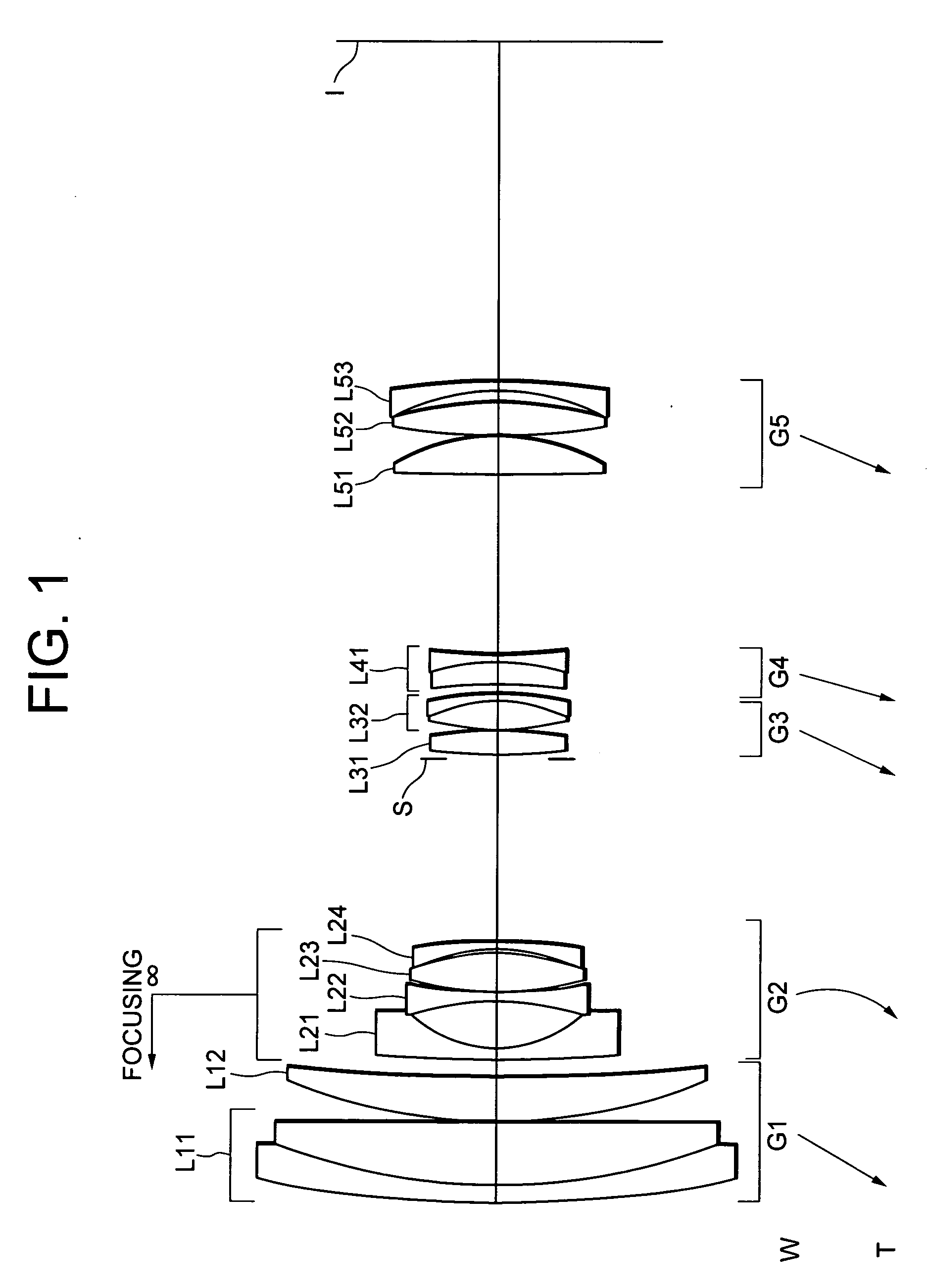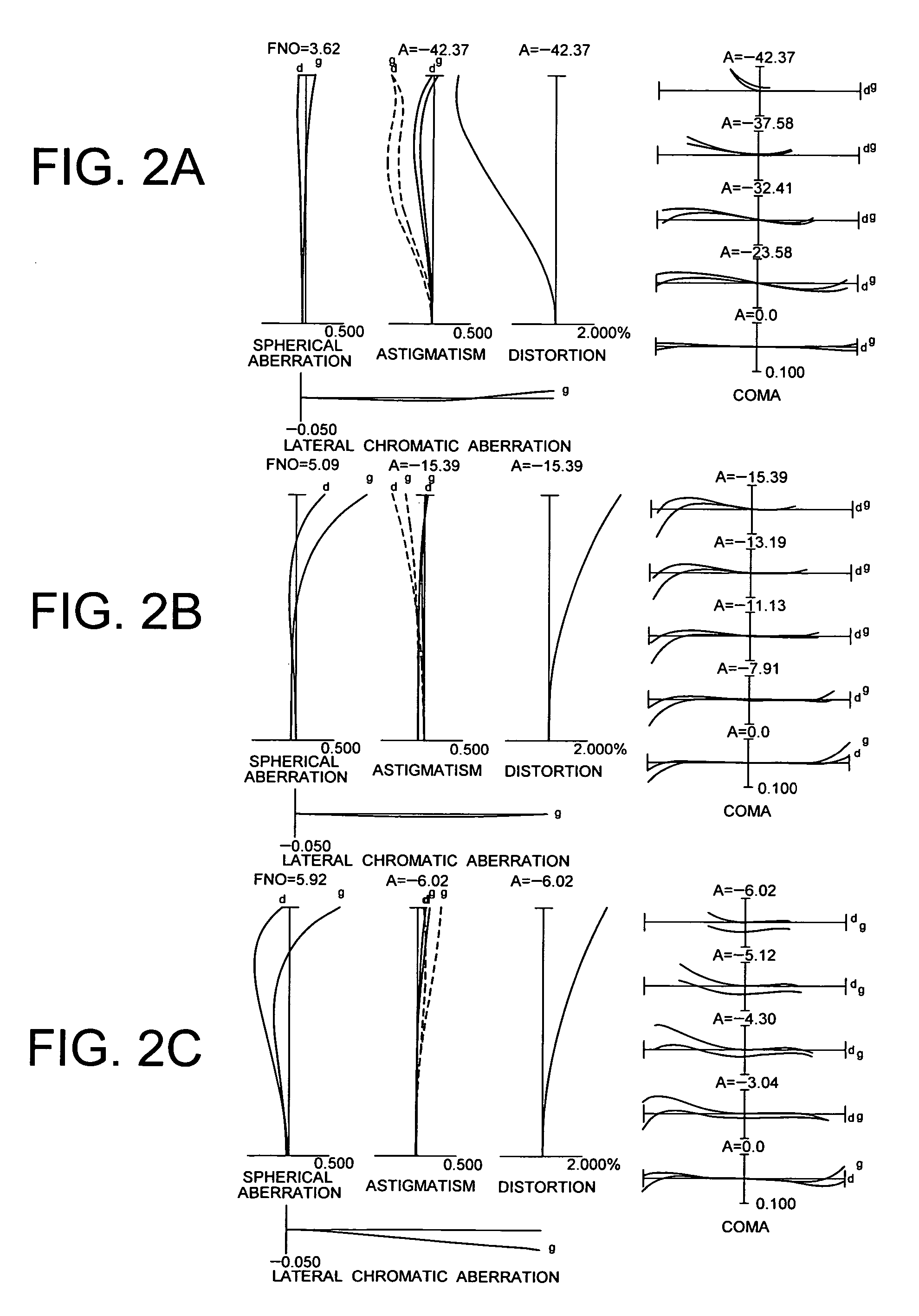Zoom lens system
a zoom lens and zoom technology, applied in the field of zoom lens system, can solve the problems of insufficient correction of curvature of field and difficult correction of aberration, and achieve the effect of excellent correction of aberrations over the entire focal length and high zoom ratio
- Summary
- Abstract
- Description
- Claims
- Application Information
AI Technical Summary
Benefits of technology
Problems solved by technology
Method used
Image
Examples
example 1
[0055]FIG. 1 is a diagram showing a lens configuration of a zoom lens system according to Example 1.
[0056] In FIG. 1, the zoom lens system according to Example 1 is composed of, in order from an object, a first lens group G1 having positive refractive power, a second lens group G2 having negative refractive power, a third lens group G3 having positive refractive power, a fourth lens group G4 having negative refractive power, and a fifth lens group G5 having positive refractive power. When a state of lens group positions varies from a wide-angle end state W to a telephoto end state T, a distance between the first lens group G1 and the second lens group G2 increases, a distance between the second lens group G2 and the third lens group G3 decreases, a distance between the third lens group G3 and the fourth lens group G4 increases, and a distance between the fourth lens group G4 and the fifth lens group G5 decreases.
[0057] The first lens group G1 is composed of a cemented lens L11 con...
example 2
[0070]FIG. 3 is a diagram showing a lens configuration of a zoom lens system according to Example 2.
[0071] In FIG. 3, the zoom lens system according to Example 2 is composed of, in order from an object, a first lens group G1 having positive refractive power, a second lens group G2 having negative refractive power, a third lens group G3 having positive refractive power, a fourth lens group G4 having negative refractive power, and a fifth lens group G5 having positive refractive power. When a state of lens group positions varies from a wide-angle end state W to a telephoto end state T, a distance between the first lens group G1 and the second lens group G2 increases, a distance between the second lens group G2 and the third lens group G3 decreases, a distance between the third lens group G3 and the fourth lens group G4 increases, and a distance between the fourth lens group G4 and the fifth lens group G5 decreases.
[0072] The first lens group G1 is composed of a cemented lens L11 con...
example 3
[0084]FIG. 5 is a diagram showing a lens configuration of a zoom lens system according to Example 3.
[0085] In FIG. 5, the zoom lens system according to Example 3 is composed of, in order from an object, a first lens group G1 having positive refractive power, a second lens group G2 having negative refractive power, a third lens group G3 having positive refractive power, a fourth lens group G4 having negative refractive power, and a fifth lens group G5 having positive refractive power. When a state of lens group positions varies from a wide-angle end state W to a telephoto end state T, a distance between the first lens group G1 and the second lens group G2 increases, a distance between the second lens group G2 and the third lens group G3 decreases, a distance between the third lens group G3 and the fourth lens group G4 increases, and a distance between the fourth lens group G4 and the fifth lens group G5 decreases.
[0086] The first lens group G1 is composed of a cemented lens L11 con...
PUM
 Login to View More
Login to View More Abstract
Description
Claims
Application Information
 Login to View More
Login to View More - R&D Engineer
- R&D Manager
- IP Professional
- Industry Leading Data Capabilities
- Powerful AI technology
- Patent DNA Extraction
Browse by: Latest US Patents, China's latest patents, Technical Efficacy Thesaurus, Application Domain, Technology Topic, Popular Technical Reports.
© 2024 PatSnap. All rights reserved.Legal|Privacy policy|Modern Slavery Act Transparency Statement|Sitemap|About US| Contact US: help@patsnap.com










